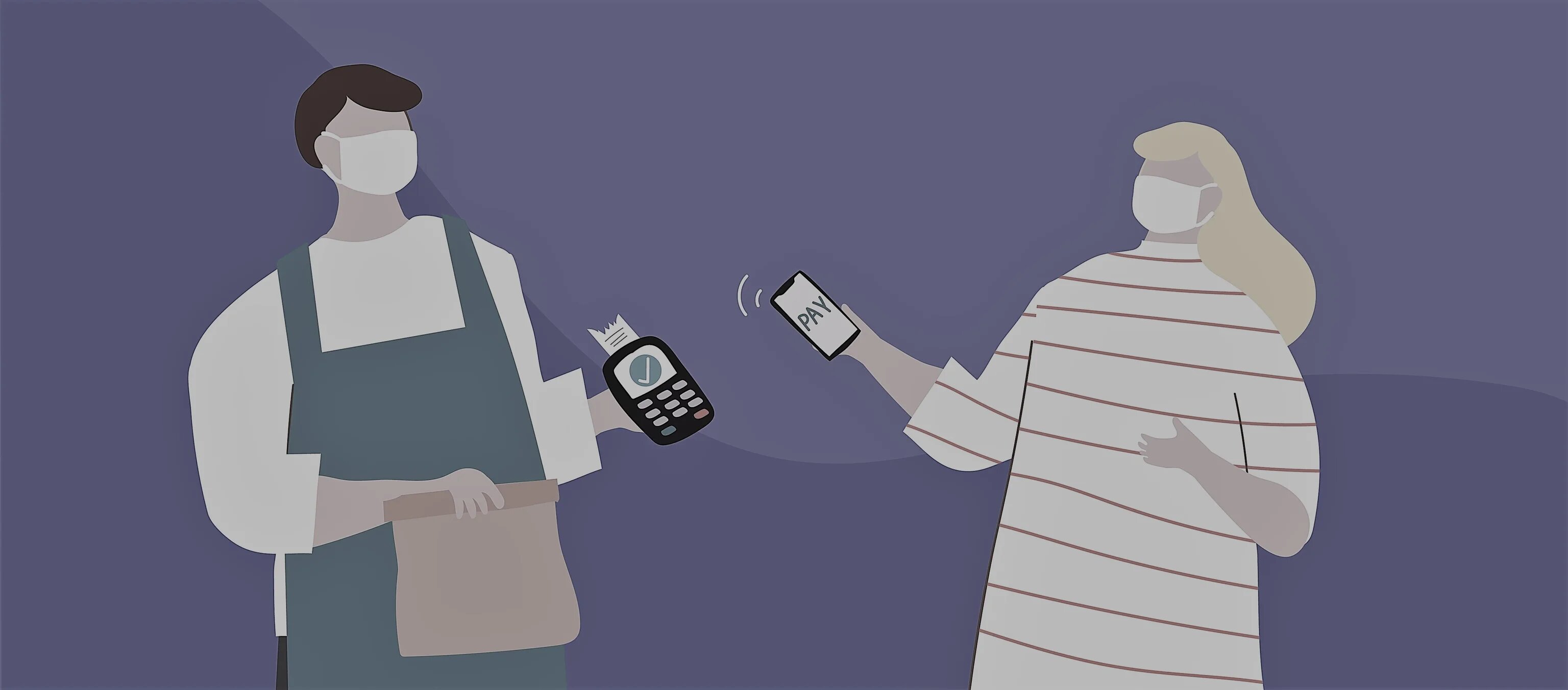
How will we pay tomorrow?
Pay with a smile, a word, a touch, a tap. With the rise of mobile and digital payment, the days of the physical wallet seem to be numbered. But how will we pay for our purchases tomorrow? What is the level of maturity of mobile payment? What role will biometrics and the Internet of Things play? Will we see the end of cash? Faced with these questions, we have selected 5 trends among the new means of payment that are likely to become established in the years to come.
1. Mobile and contactless payment
Contactless payment is not new, but the Covid-19 crisis is likely to mark the real take-off of this payment method, whether by card or mobile phone. In the first four months of 2020, for example, the social distancing measures put in place in the Nordic countries (Denmark, Finland, Iceland, Norway and Sweden) to combat the pandemic resulted in an unprecedented 12% increase in contactless payments. This is unseen, even in a region known for using the least amount of cash in the world.
Apple Pay, Android Pay, Samsung Pay,... contactless payment using a smartphone is gaining ground. Like contactless bank cards, mobile phones use Near Field Communication (NFC) technology, which allows data to be exchanged over very short distances, to communicate with payment terminals. Consumers increasingly appreciate not having to enter their PIN code at the terminal and being able to leave their bank card at home. In the Netherlands, the number of ING customers who use mobile payments almost quadrupled between 2018 and 2019.
2. The growing role of biometrics
Biometrics is already used for authentication purposes in the form of a fingerprint, voice print or facial recognition, as is the case, for example, with Apple Pay. In use, biometric authentication is not very restrictive and makes payment more transparent. In China, nearly 300 KFC restaurants have tested smile-to-pay, a facial recognition technology developed by Ant Financial, Alibaba's subsidiary dedicated to payments, which consists of having the terminal compare the customer's face with a photograph linked to a secure payment account. Also in China, the Carrefour Group, in partnership with Tencent via WeChat, has deployed payment by facial recognition in all of its local points of sale, so 210 hypermarkets.
3. Paying with a connected ... object
The IoT is booming. And it is now possible to pay for a purchase with one's watch, fitness band or a piece of jewellery like the K Ring, the connected ring developed by Mastercard. Connected watches and activity trackers Garmin Pay and Fitbit Pay are two other examples of IoT solutions that allow people to pay anywhere contactless payment is possible. Fitbit Pay, for example, is supported in more than 20 countries and by more than 160 banks and payment institutions, including the Mastercard and Visa networks.
Partnerships between payment networks and industry are emerging to integrate payments using the Internet of Things (IoT). MasterCard, IBM and General Motors, for example, have partnered to integrate Masterpass secure payment technology into a new cognitive mobility platform called OnStar Go. Since 2017, owners of GM vehicles in the US have already been able to make certain purchases, such as filling up with fuel or paying for a meal at the drive-thru, without leaving the comfort of their car or even opening their wallet. This service is set to be gradually extended to other countries.
4. The development of P2P payments
Peer-to-peer payment services are applications - or application features - that allow an individual to send money to others quickly and usually for free, using a phone number, email address or username. The best known of these services are Venmo (PayPal), Cash App (Square) and Zelle in the US. In addition to its payment services for online purchases, PayPal also offers its registered users a P2P money transfer solution. The digital wallets Google Pay and Apple Pay Cash also offer such features to their users. Some social networks, including Facebook Messenger and Skype, also allow peer-to-peer money transfers.
In addition, peer-to-peer payment is gradually making its way into the consumer sales sector (B2C). In the Netherlands, for example, retailers who want to integrate payment directly into their own customer journey are offered a solution by ING that allows them to send their customers a payment request at the time of delivery.
5. Cash is not dead!
In the future, it is clear that cash payments will become less frequent. In some Scandinavian countries, electronic payments have become the norm. Sweden, the first country to introduce banknotes in 1661, could also become the first to go cashless: the 56 billion kroner still in circulation in the country now only represents 1.2% of GDP, the lowest level in the world - the average in the euro zone is 10% - and cash is now used in only 6% of transactions.
But cash will not disappear completely, far from it. Regulators and citizens alike are concerned about the possible disappearance of cash. How, for example, can you pay for a purchase if there is a general breakdown in the systems? What would happen to a country without any means of payment in the event of a war or cyber attack? Some believe that a cashless society would leave us with a monopoly of the banking industry. In a financial crisis, the ordinary citizen's only defence is to withdraw his or her money from the bank: in a cashless society this would be impossible. Others fear arbitrary deductions from citizens' accounts or more surveillance under the pretext of fighting fraud or terrorism.
Is a cashless society desirable? One can only wonder when one learns that Sweden, the most advanced country in terms of digital payments, has just passed a new law in January this year to oblige banks to provide cash services in order to protect the elderly and the disadvantaged, and to be able to face possible cyber attacks.